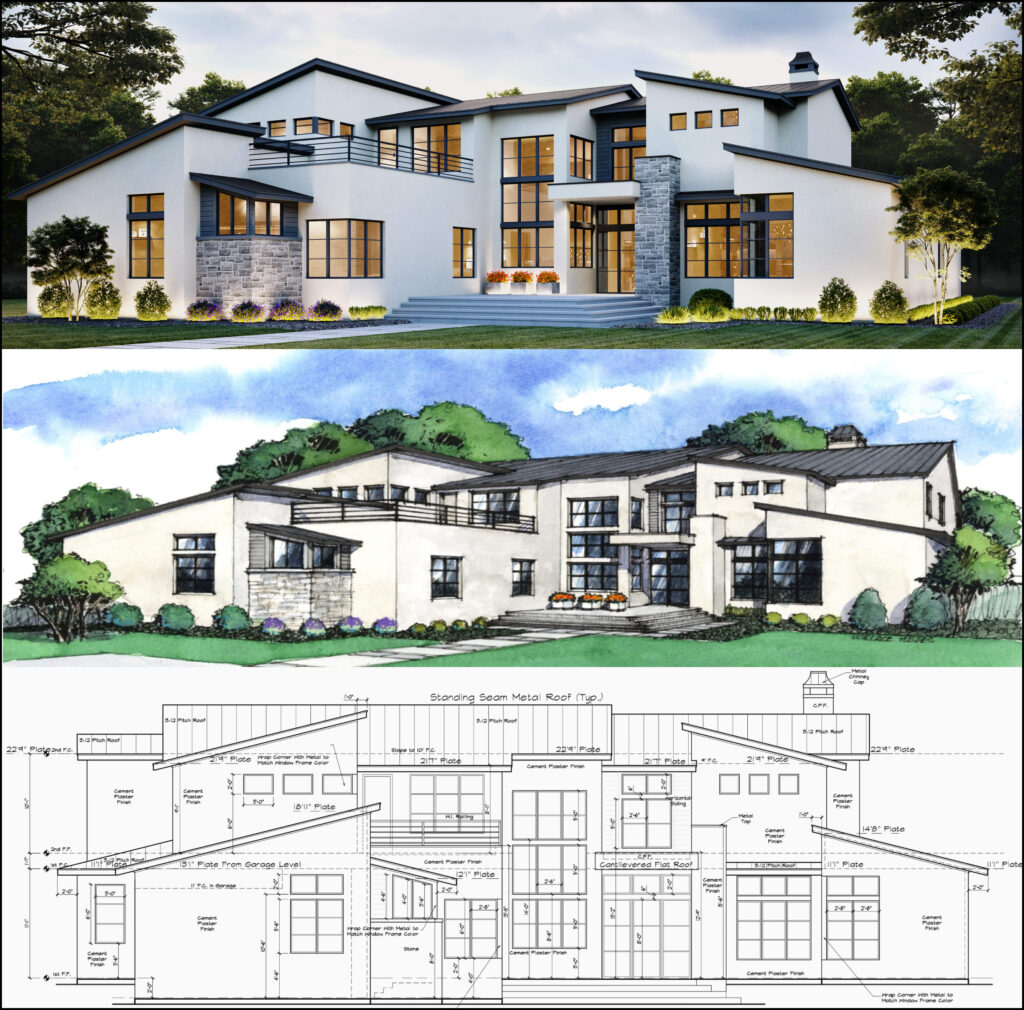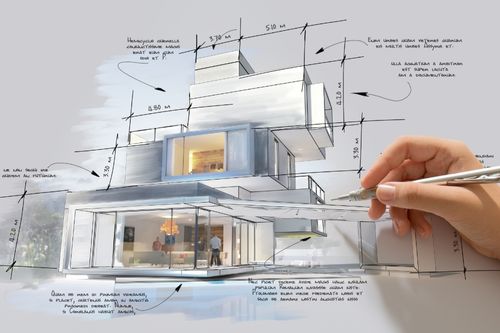Top Reasons to Choose CDA Architects for Your Residential or Commercial Designs
Top Reasons to Choose CDA Architects for Your Residential or Commercial Designs
Blog Article
Comprehending the Collaborative Process Between Engineers and Designers in Modern Building And Construction Projects
The collective process between designers and engineers is important in modern construction projects, as it integrates layout intent with design expediency. Checking out these dynamics reveals understandings that might substantially influence job outcomes and total industry standards.
The Relevance of Partnership
The joint synergy in between engineers and engineers is crucial for the effective understanding of any type of building project. This collaboration combines distinctive proficiency and viewpoints, enabling the assimilation of cutting-edge layout with practical design options. By interacting, engineers and engineers can ensure that a project not just satisfies aesthetic and practical needs however likewise complies with security, sustainability, and monetary constraints.
Collaboration fosters a common vision, helping with the placement of objectives and assumptions from the outset. This alignment is essential in addressing possible difficulties and mitigating dangers that might develop throughout the project lifecycle. A collaborative approach permits for the efficient allocation of sources, optimizing both time and price.
The value of cooperation encompasses the repetitive process of design and building and construction, where feedback from designers can educate architectural decisions, leading to more practical and lasting designs. Conversely, engineers can influence engineers to assume creatively concerning how to accomplish architectural stability without jeopardizing creative intent. Inevitably, the joint relationship between designers and engineers is not simply valuable; it is fundamental to the creation of high-grade, functional, and innovative built settings that fulfill the demands of culture.
Interaction Strategies and Tools
Effective communication strategies and devices are vital for cultivating cooperation in between designers and designers throughout the job lifecycle. Establishing clear channels of interaction is vital to guarantee that all team members are aligned with project goals, timelines, and duties. Normal meetings, both in-person and virtual, offer chances for stakeholders to review development, address worries, and make informed choices.

Furthermore, embracing collaborative interaction tools, such as Slack or Microsoft Teams, permits instant messaging, documents sharing, and recurring conversations, advertising an extra agile response to emerging issues. Paper monitoring systems likewise play a crucial duty in organizing task documents, guaranteeing that all staff member have access to the most up to date details.
Shared Goals and Project Vision
A combined task vision works as the foundation for successful collaboration between architects and engineers (cda architects). This common vision not just lines up the efforts of both parties however likewise develops a typical framework for decision-making throughout the project's lifecycle. By verbalizing clear goals, stakeholders can properly browse the complexities of contemporary building tasks, ensuring that both aesthetic and functional needs are satisfied
Developing common goals entails open dialogue and an extensive understanding of each technique's contributions. Architects commonly concentrate on layout intent, spatial connections, and customer experience, while designers emphasize architectural stability, systems functionality, and conformity with policies. When these perspectives are aligned, the result is a natural task that sticks to both creative goals and technical usefulness.
Moreover, a well-defined job vision fosters liability amongst employee, urging each participant to take ownership of their function in achieving the preferred result. Regular check-ins and joint workshops can additionally enhance this commitment, permitting for changes to be made as the task advances. Inevitably, a shared vision not just boosts synergy helpful site yet likewise elevates the quality of the last deliverable, resulting in effective task conclusion.
The Duty of Innovation
Leveraging modern technology has actually ended up being crucial in boosting cooperation in between architects and engineers. Structure Info Modeling (BIM) stands out as a pivotal technology, permitting both designers and designers to produce in-depth 3D versions that envelop layout intent and architectural integrity.
Furthermore, cloud-based platforms enable smooth partnership, permitting project stakeholders to accessibility and upgrade project information from anywhere. This cultivates a society of transparency and liability, as changes can be tracked and assessed in real-time. Furthermore, mobile applications further boost interaction, providing on-site groups with instant access to job specifications and updates.
Arising modern technologies such as artificial knowledge and device learning are also starting to play a role in predictive analysis, aiding groups determine potential concerns prior to they develop. Ultimately, the duty of modern technology in architecture-engineering cooperation not just improves process efficiencies however additionally improves advancement, leading to even more successful task end results. By embracing these technological innovations, architects visit this website and engineers can make sure a more cohesive and productive joint procedure throughout the construction lifecycle.
Situation Studies in Effective Collaborations
Various situation studies illustrate the profound influence of effective partnerships between architects and engineers on task results. One remarkable instance is the collaboration on the High Line in New York City City, where landscape engineers, engineers, and metropolitan coordinators interacted to transform a deserted rail line into a lively public park. This multidisciplinary method not only enhanced the aesthetic quality however likewise made certain structural safety and ecological sustainability.

The Burj Khalifa in Dubai additionally shows the navigate to this website value of joint initiatives - cda architects. The integration of design and design experience enabled the project team to accomplish unprecedented elevations while adhering to safety and security laws and aesthetic vision
These instances highlight the relevance of communication, trust fund, and shared purposes. In today's complex building and construction setting, such collaborations are necessary to navigating challenges and supplying jobs that satisfy both practical and visionary goals.
Verdict
In verdict, the collaboration between designers and designers is necessary for the success of contemporary building and construction jobs. Reliable communication techniques, a shared job vision, and the assimilation of sophisticated innovations are essential parts that facilitate this collaboration.
Report this page